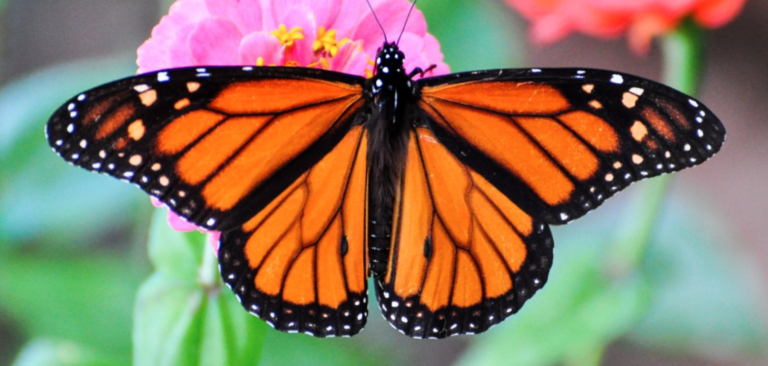Introduction
Known by another name, the Mariposa Monarca, or monarch butterfly, is one of the most amazing creatures in nature. Its stunning orange-black migration and bodies have fascinated scientists, environmentalists, and nature suckers likewise. This composition delves into the life cycle, migration patterns, niche, and conservation sweats girding the Monarch butterfly, pressing its ecological significance and the challenges it faces.
Life Cycle of the Mariposa Monarca
Egg Stage
The life cycle of the Mariposa Monarca butterfly begins with the laying of eggs. womanish Monarchs lay their eggs simply on milkweed shops, which are the only food source for the arising caterpillars. These bitsy, white eggs are precisely deposited on the underpart of milkweed leaves.
Larval (Caterpillar) Stage
After about four days, the eggs door into naiads , generally known as caterpillars. Mariposa Monarca caterpillars are fluently recognizable by their distinctive black, white, and unheroic stripes. During this stage, which lasts around two weeks, the caterpillars feed voraciously on milkweed leaves, storing energy for their metamorphosis.
Pupal (Chrysalis) Stage
Once completely grown, the caterpillar attaches itself to a secure face and forms a chrysalis, entering the pupal stage. Inside the chrysalis, remarkable changes do as the caterpillar undergoes transformation. This stage lasts about 10 days, after which the adult butterfly emerges.
Adult Stage
The final stage is the adult butterfly. Mariposa Monarca are known for their vibrant orange and black bodies, which serve as a warning to bloodsuckers about their poison — a result of their milkweed diet. Adult Monarchs feed on quencher from colorful flowers, abetting in pollination.
Monarch Butterfly Migration Patterns
North American Migration
One of the most extraordinary aspects of the Mariposa Monarca butterfly is its long- distance migration. Monarchs in North America embark on an grand trip that can cover up to 3,000 long hauls. In the fall, millions of Monarchs resettle from Canada and the United States to central Mexico to escape the cold downtime temperatures.
Overwintering in Mexico
In Mexico, Mariposa Monarca butterflies congregate in the oyamel fir timbers of the Trans- Mexican Volcanic Belt. Then, they hibernate in large colonies, adhering to the trees in clusters to conserve warmth. This overwintering period is pivotal for their survival and the durability of their life cycle.
Spring Migration and Breeding
As spring approaches, the Mariposa Monarca begin their trip northward, lovemaking and laying eggs on milkweed shops along the way. This northward migration continues through consecutive generations, with each generation traveling farther north until they reach their parentage grounds in the northern United States and Canada.
Habitat and Distribution
Preferred Habitats
Mariposa Monarca butterflies are primarily set up in open fields, meadows, and auditoriums where milkweed shops are abundant. Milkweed is essential for their reduplication, as it’s the only factory on which they lay their eggs and the sole food source for their naiads .
Geographic Distribution
Monarchs are generally set up in North America, but their range extends to Central and South America, the Caribbean, and corridor of Europe, Asia, and Australia. still, the North American Monarch population is the most studied due to its spectacular migrant geste .
Conservation Efforts
Threats to Monarch Populations
Mariposa Monarca butterflies face several pitfalls that have led to a decline in their populations. Habitat loss due to agrarian expansion, civic development, and deforestation is a significant concern. The wide use of fungicides also reduces the vacuity of milkweed and quencher sources.
Conservation Initiatives
Multitudinous conservation sweats are underway to cover the Mariposa Monarca butterfly. enterprise include planting milkweed and quencher-rich flowers, creating Monarch-friendly territories, and reducing fungicide use. Organizations and governments are also working to save the overwintering spots in Mexico and promote transnational cooperation for Monarch conservation.
Citizen Science and Awareness
Public Mindfulness and citizen wisdom play vital places in Monarch conservation. Programs like the Mariposa Monarca Watch and Journey North involve levies in covering Monarch populations and migration patterns. Educational juggernauts encourage people to plant milkweed and produce Monarch-friendly auditoriums .
Ecological and Cultural Significance
Role in Ecosystems
As pollinators, Mariposa Monarca butterflies are crucial to ecosystems. By feeding on quencher, they help in the cross-fertilization of colorful factory species, contributing to biodiversity. Their presence also indicates the health of their territories, making them important ecological pointers.
Cultural Importance
The Mariposa Monarca butterfly holds artistic significance in numerous societies. In Mexico, the appearance of Monarchs coincides with the Day of the Dead fests, emblematizing the return of the souls of the departed. Monarchs are also a symbol of metamorphosis and abidance in colorful artistic surrounds.
Conclusion
The Mariposa Monarca, with its stunning appearance and inconceivable migrant trip, continues to fascinate and inspire. While facing multitudinous challenges, combined conservation sweats and increased public mindfulness offer stopgap for the future of this iconic species. By guarding the territories and coffers vital to their survival, we can insure that the Monarch butterfly remains a symbol of nature’s adaptability and beauty for generations to come.


